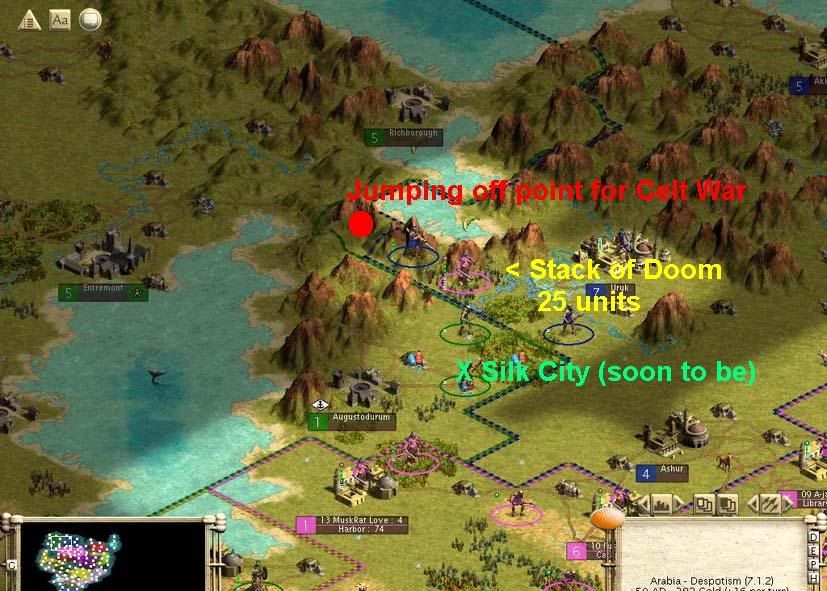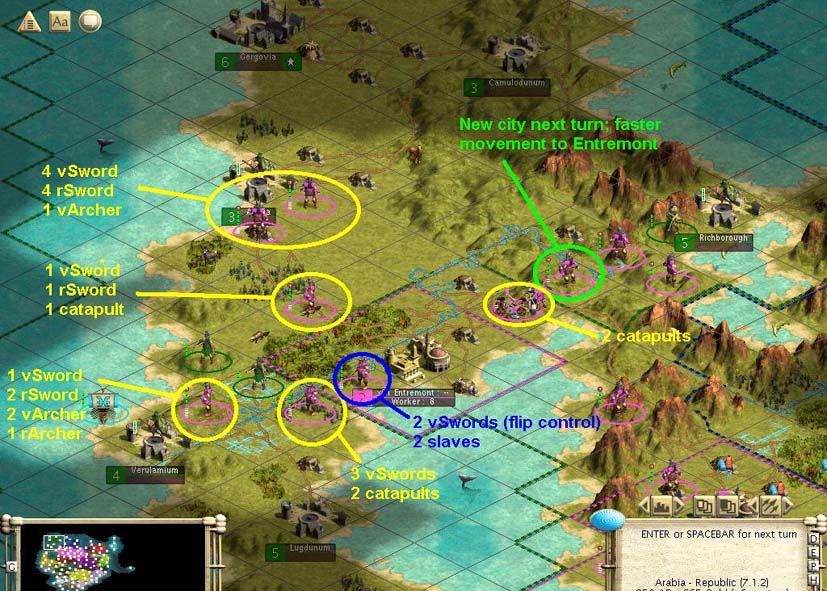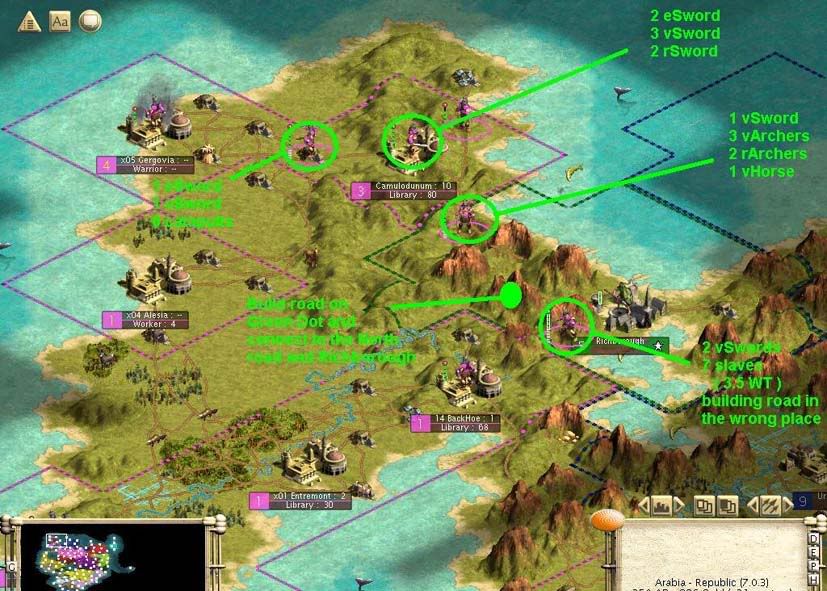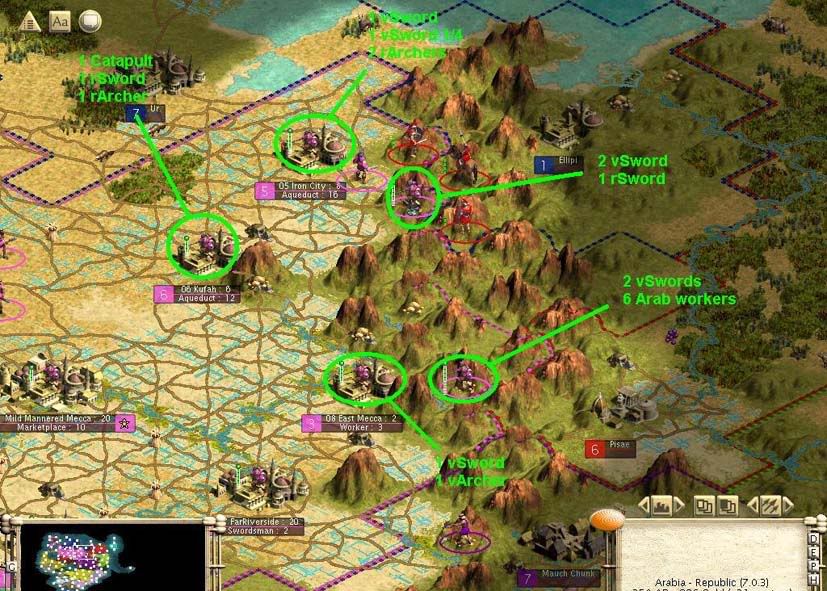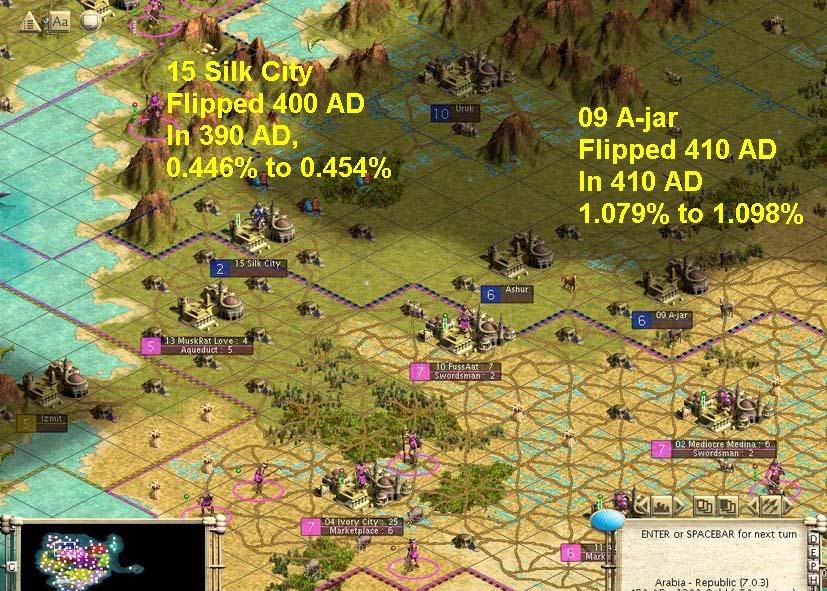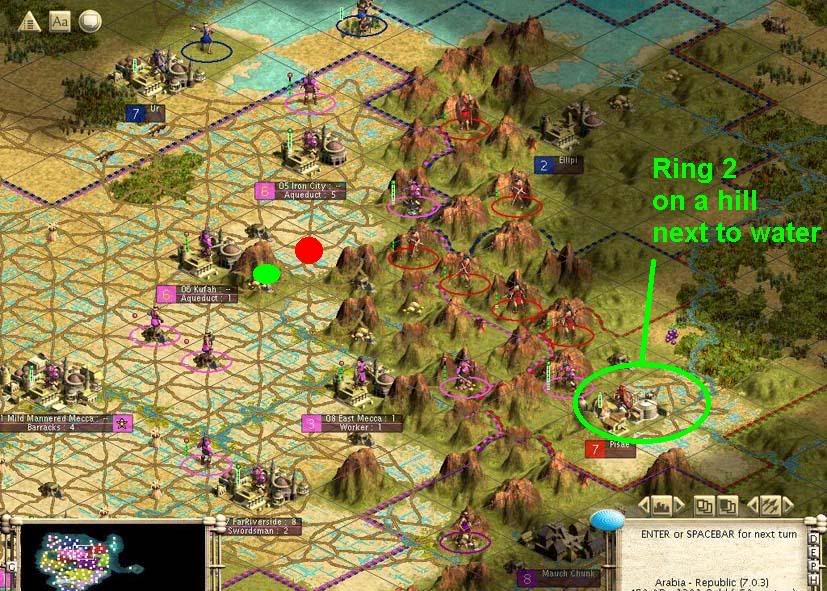CommandoBob
AbstractArt
Two changes
Somewhere in my last set of turns I stopped noting the do-nothing moves. If a unit did not move, like unfortified Archers in cities, I omitted that unit from the turn log. Made the write up easier for me to do and easier for you to read.
I have also decided to do the turn logs and my reaction to the turns in two separate posts. I like a lot of screen shots and dot maps and planning tools. But I have too many too close together and it made the page slow to load. So I will break them up, which will results in more posts but fewer graphics per page.
Southeast
The grand Arab plans for expanding into the southeast were stopped by a new city the Romans planted where I wanted to be and by the cultural expansion of Allegheny of the Iroquois. The Roman city of Pisae, sits smack-dab in the middle of the only three city-sites due east of Mild-Mannered-Mecca on the eastern side of the mountains. This city was to be the Arab gateway to the east. No longer.
The expansion of Allegheny likewise took away another prime spot on ring 2. This one had flood-plains and grassland to enable it to grow, unlike the hills that surrounded the former city of Orange Dot. No city here, either.
Thus, in the southeast the Arabs were 1 for 3.
Northwest
Arabs plans were more successful in expanding towards the Celts. All three cities, Pink Dot, Purple Dot and New City Three, were established. None are great cities yet, but 09 A-jar and 10 FussAat have good growth potential. The remaining city, 11 Aden, will be Okay, but mainly serves to complete the 1 ring and to act as a slight buffer between M-M-M and the Carthage city of Theveste.
Here, the Arabs did better, planting 3 of 3 planned cities.
Below is the current Arab Empire:
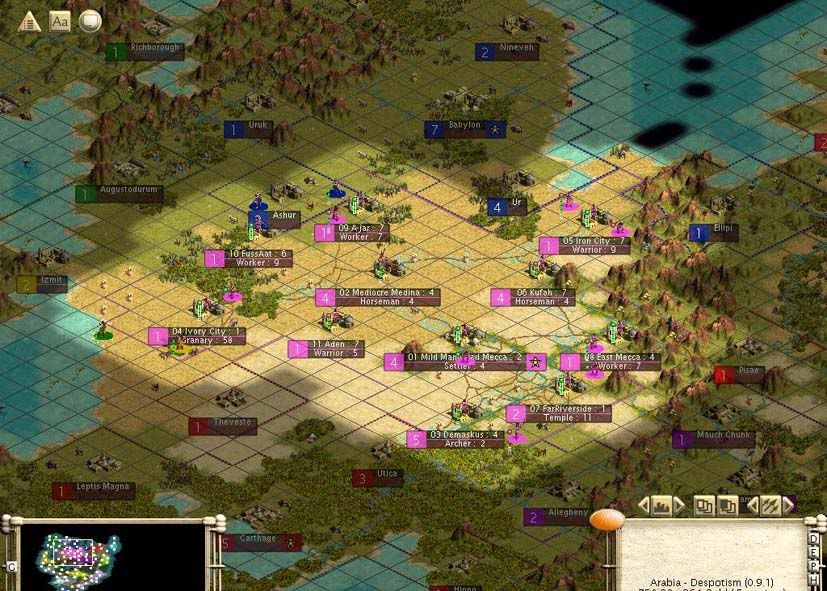
Warfare Plans
I had planned on using the Babylonians to help conquer the Celts, but when I did so I was relying on my memory of the terrain to the north. But when I looked at the map I saw that the Babylonians could not be of much help after all. I thought that the Celts and Babylonian cities were closer than what they are on the north coast.
Below is the map of the Arab (North), Babylon and Celt empires:
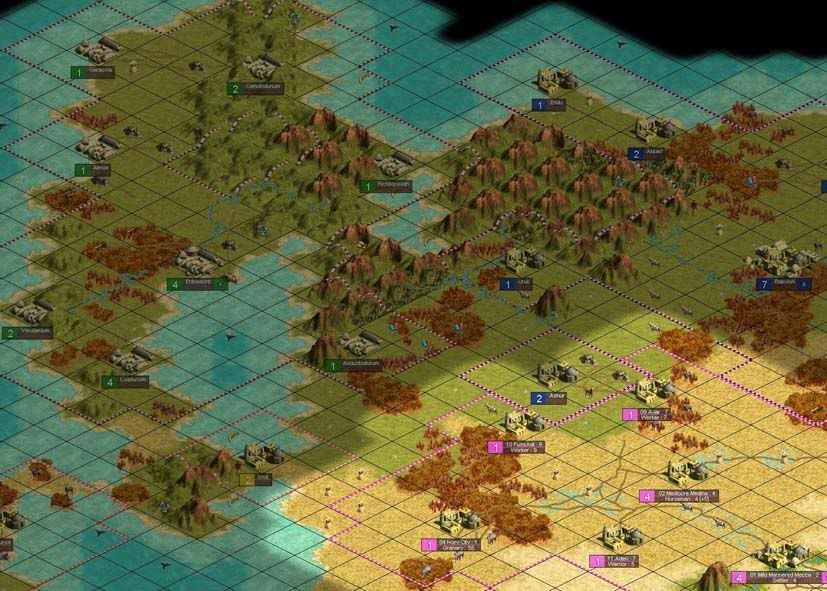
Careful examination of the current Celt border shows an opportunity to get close and attack quickly.
The Celtic Expedition:
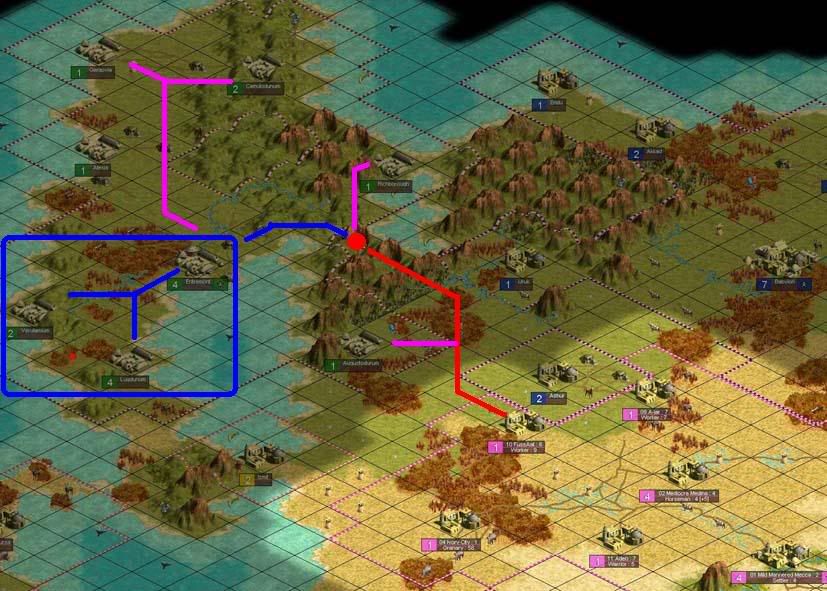
The red lines above lead to the Red Dot, which is outside the borders of Celt land and only three turns from Entremont, the Celt capital. The three cities inside the blue rectangle would be the first cities to be attacked and would effectively kill the Celts as a power, since these three cities account for almost 2/3 of the Celtic population (10 of 16 as of now in eight cities). The pink lines would be the mopping up attacks to eliminate the Celts entirely.
Big bonus: Entremont is not yet connected to iron. No Gallic Swordsman.
I think that 10 to 12 swordsman could take out the first three cities. I would plan to garrison each city with two units, which would make further campaigning in the north difficult until the second wave of units arrived. The city near the silks would be razed and replaced with an Arab city. The other cities would be occupied and produce military units or workers.
Somewhere in my last set of turns I stopped noting the do-nothing moves. If a unit did not move, like unfortified Archers in cities, I omitted that unit from the turn log. Made the write up easier for me to do and easier for you to read.
I have also decided to do the turn logs and my reaction to the turns in two separate posts. I like a lot of screen shots and dot maps and planning tools. But I have too many too close together and it made the page slow to load. So I will break them up, which will results in more posts but fewer graphics per page.
Southeast
The grand Arab plans for expanding into the southeast were stopped by a new city the Romans planted where I wanted to be and by the cultural expansion of Allegheny of the Iroquois. The Roman city of Pisae, sits smack-dab in the middle of the only three city-sites due east of Mild-Mannered-Mecca on the eastern side of the mountains. This city was to be the Arab gateway to the east. No longer.
The expansion of Allegheny likewise took away another prime spot on ring 2. This one had flood-plains and grassland to enable it to grow, unlike the hills that surrounded the former city of Orange Dot. No city here, either.
Thus, in the southeast the Arabs were 1 for 3.
Northwest
Arabs plans were more successful in expanding towards the Celts. All three cities, Pink Dot, Purple Dot and New City Three, were established. None are great cities yet, but 09 A-jar and 10 FussAat have good growth potential. The remaining city, 11 Aden, will be Okay, but mainly serves to complete the 1 ring and to act as a slight buffer between M-M-M and the Carthage city of Theveste.
Here, the Arabs did better, planting 3 of 3 planned cities.
Below is the current Arab Empire:

Warfare Plans
I had planned on using the Babylonians to help conquer the Celts, but when I did so I was relying on my memory of the terrain to the north. But when I looked at the map I saw that the Babylonians could not be of much help after all. I thought that the Celts and Babylonian cities were closer than what they are on the north coast.
Below is the map of the Arab (North), Babylon and Celt empires:

Careful examination of the current Celt border shows an opportunity to get close and attack quickly.
The Celtic Expedition:

The red lines above lead to the Red Dot, which is outside the borders of Celt land and only three turns from Entremont, the Celt capital. The three cities inside the blue rectangle would be the first cities to be attacked and would effectively kill the Celts as a power, since these three cities account for almost 2/3 of the Celtic population (10 of 16 as of now in eight cities). The pink lines would be the mopping up attacks to eliminate the Celts entirely.
Big bonus: Entremont is not yet connected to iron. No Gallic Swordsman.
I think that 10 to 12 swordsman could take out the first three cities. I would plan to garrison each city with two units, which would make further campaigning in the north difficult until the second wave of units arrived. The city near the silks would be razed and replaced with an Arab city. The other cities would be occupied and produce military units or workers.


 And after the next set of turns had been played. So this analysis is a bit sketchy.
And after the next set of turns had been played. So this analysis is a bit sketchy.